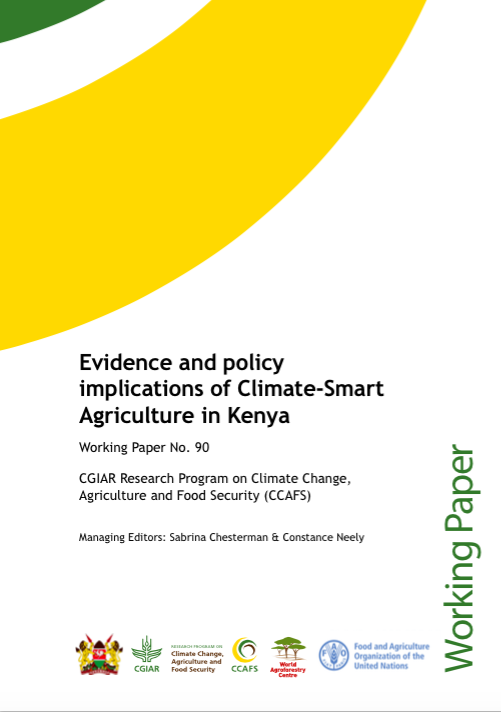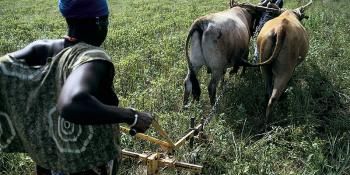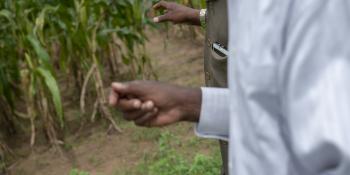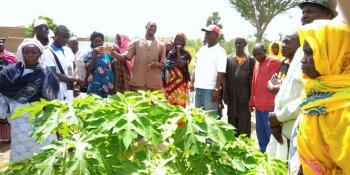Learning to make Kenyan agriculture ‘climate-smart’

Farmers, researchers, agriculture experts and climate change policymakers put their heads together in Kenya to determine ideal ways for inexpensive, climate-smart agriculture. Here are some of their lessons.
Kenyan farmers are well aware that their climate is becoming more unpredictable with climate change. The Kenyan government’s Climate Change Unit (CCU) of the Ministry of Agriculture, Livestock and Fisheries of Kenya is now working closely with over 40 agricultural development project teams to learn what constitutes ‘climate-smart agriculture’. They are seeking evidence of which technologies, policies and strategies can help Kenyan farmers and other food system actors cope with an increasingly uncertain climate.
In October 2014, the CCU, along with the Food and Agriculture Organization of the United Nations (FAO), the World Agroforestry Centre (ICRAF) and the CGIAR Research Program on Climate Change, Agriculture and Food Security (CCAFS), convened a workshop with 56 experts from 22 different organizations and 2 National Ministries working on climate-smart agriculture across 30 counties in Kenya. These stakeholders from research, practice and policy were brought together to interactively share and analyse scientific evidence and field experience from a wide range of projects related to climate-smart agriculture (CSA) in integrated farming systems in Kenya.

Prior to the meeting, the participants shared their key project lessons, evidence and implications through concise slide presentations. They then came together in person and were led through a structured, facilitated process developed at ICRAF, called the Stakeholder Approach to Risk Informed Evidence Based Decision Making (SHARED). This process involves a series of working group sessions and is an ongoing, iterative, joint learning approach. Participants took stock of the current state of knowledge and critically explored the various dimensions of CSA in Kenya. This ‘unpacking’ of CSA allowed for evaluation and discussion across the broad range of actors gathered from farmers, researchers, development practitioners and climate change policy makers. It is leading toward a coherent articulation of how CSA serves to simultaneously achieve Kenya’s development goals and climate change targets.
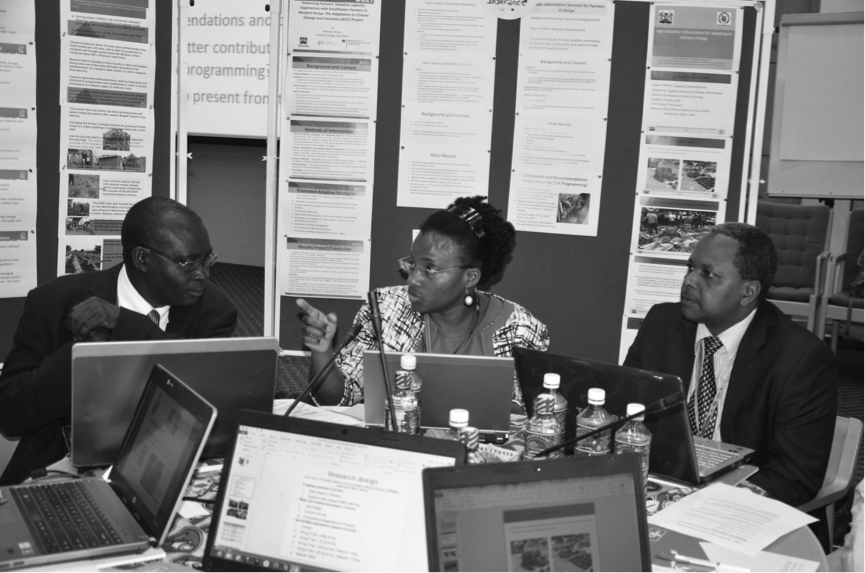
The face-to-face working group sessions, in combination with integrative analysis of the projects and experiences presented, resulted in the development of joint messaging and policy recommendations for immediate input to the revision of Kenya’s Draft National Climate Change Policy Framework (2014). The workshop also contributed evidence-based and jointly agreed upon messaging regarding CSA to the policy dialogues of the UNFCCC (COP 20, December, Peru) and other international efforts and forums, including the Alliance for Climate-Smart Agriculture in Africa.
This working paper provides a comprehensive technical background and the policy messaging resulting from the workshop has now been released. It includes key recommendations for practitioners promoting widespread uptake of CSA practices, and specific policy recommendations for the Climate Change Unit to take forward.
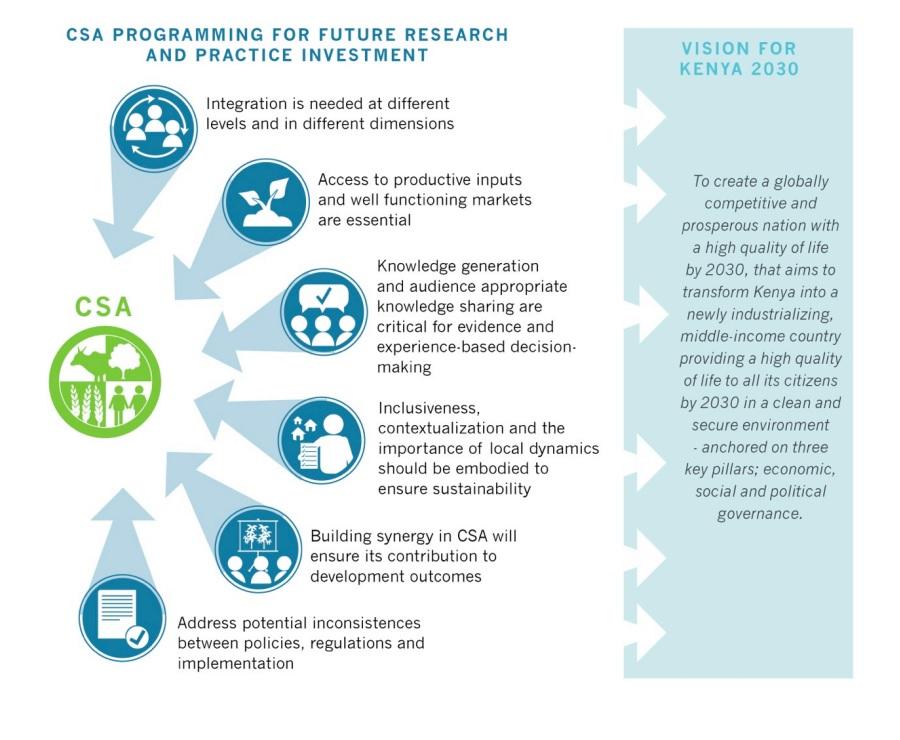
Joint policy messaging
The joint policy messaging of this team, together with the Climate Change Unit of the Ministry of Agriculture Livestock and Fisheries and the Climate Change Secretariat of the Ministry of Environment Water and Natural Resources, as an input to the Kenya Climate Change Policy Framework and key international climate change meetings, includes the following recommendations:
Consider development priorities. Climate-smart agriculture (CSA) must contribute to building opportunities for employment, education, equity and market opportunities.
Connect interdisciplinary research, practice and policy. Research, agricultural activities and policy development should be integrated from the start of any CSA initiative.
Integrate farm and landscape systems. Integrating the production of livestock, fish, crops and trees on farms or throughout the entire landscape can enhance productivity, strengthen the resilience of farming systems and reduce and remove greenhouse gas emissions.
Include women and youth. Specific attention needs to be paid to building the capacity of women, men and youth who manage natural resources.
Connect policy and regulation. Inconsistencies between policies and regulations can undermine CSA.
Fill knowledge gaps. CSA in Kenya still faces a number of knowledge gaps, including:
- Baseline data for measuring, reporting and verifying the effectiveness of CSA practices;
- Reliable, downscaled climate and weather forecasts;
- Country-specific emission factors;
- An understanding of the change in the greenhouse gas balance and other impacts brought about by the integration of livestock and/or fish farming, conservation agriculture and planting trees on farms and in the landscape;
- Appropriate inputs to advance CSA, evidence of reduced GHG emissions through alternative energy sources in larger value chain analyses;
One of the most valuable take home messages was that farms and landscapes that are integrated (crops, trees, fisheries, and livestock) can achieve a sustainable carbon balance. By integrating agricultural sectors, there is a great return on investment at all scales.
The changing climate, both environmentally and economically, does not allow for a multitude of diverse CSA project activities unless they are complementary and headed in an agreed and harmonised direction. The implication is that donors and implementers must work in tandem with the government to prioritise investments that reduce risk and enhance the capacity at local levels for scaling up CSA.

